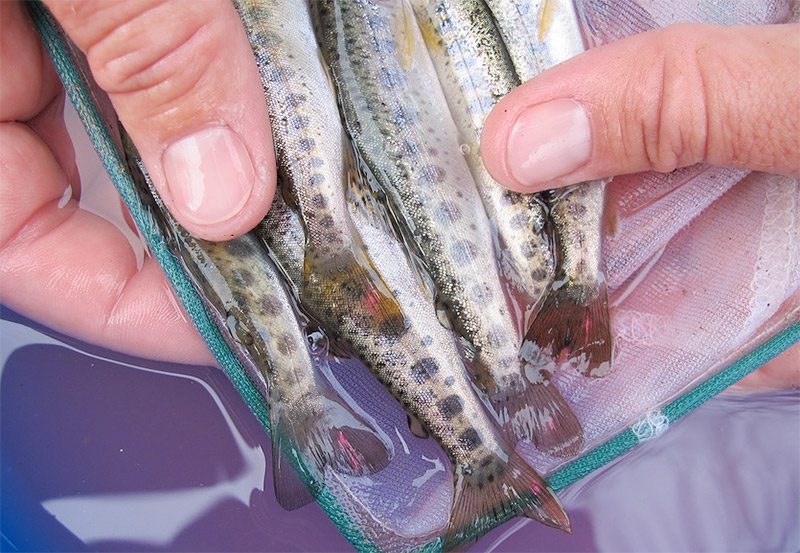Wednesday February 13, 2013

Marking fish with dye to test the efficiency of our rotary screw traps is like giving fish a temporary tattoo. The bright, injectable photonic dyes (IPDs) that we use leave temporary marks in fish tissue, and how long the marks last depends on the fish species, dye color, and the location applied (Roberts and Angermeier 2004). We prefer not to use permanent marks because tagging fish with a glowing, fluorescent badge may be the equivalent of painting targets on their backs, and could increase their vulnerability to predation. Although the effect of IPD marks on predation vulnerability has not been experimentally studied for most salmonids, research on other species like bluegill has shown that predators selectivity target fish marked with bright colors (Catalano et al. 2001). The marks on the young fish we tag will fade away in a few weeks, letting them swim incognito once again.

